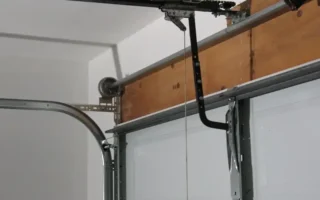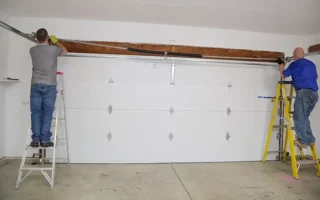Garage door springs are essential components that enable your garage door to open and close smoothly by counterbalancing its weight. Understanding how long garage door springs last is crucial for homeowners, as worn or broken springs can cause inconvenience, compromise safety, and lead to costly repairs. This home guide provides a detailed overview of the lifespan of different types of garage door springs, factors that affect their durability, signs of wear, and maintenance tips to extend their service life. Whether you’re a new homeowner or looking to maintain your garage door system, this guide will help you recognize when it’s time to replace your springs and how to care for them properly, ensuring your garage remains functional and safe for years to come.
| Garage Door Spring Type | Average Lifespan (Years) | Average Lifespan (Cycles) | Factors Affecting Lifespan | Notes |
|---|---|---|---|---|
| Torsion Springs | 7 to 12 years | About 10,000 to 15,000 | Quality of spring, usage frequency, maintenance | Last longer due to evenly distributed force and fewer moving parts |
| Extension Springs | About 7 years | Around 10,000 cycles | Usage frequency, rust, door weight | Shorter lifespan as they endure constant pulling force |
| Heavy Use (multiple cycles per day) | 5 to 7 years or less | – | High frequency of door opening/closing | More frequent use shortens lifespan |
| Low Use (few cycles/week) | Up to 30 years | Up to 10,000 cycles | Minimal use, rust prevention | Sparing use significantly extends lifespan |
Types of Garage Door Springs
Garage door springs come in two main types: torsion and extension springs.
Torsion springs are mounted above the garage door opening. They work by twisting and unwinding as the door moves up or down, providing a balanced lift.
Extension springs, on the other hand, are located on either side of the door tracks. These stretch to help lift the garage door, making them ideal for lighter doors.
Each type has its own benefits and drawbacks based on your specific needs. Torsion springs typically last longer but can be pricier to install. Extension springs may be more cost-effective upfront, but might require more frequent replacements.
Choosing between these options depends on factors like weight capacity and usage frequency. Understanding their mechanics will help you make an informed decision when installing or replacing them in your garage system.
Signs That Your Garage Door Springs Need Replacing
If your garage door is acting up, the springs might be to blame. One of the most telling signs is if the door feels heavy or struggles to open smoothly. This unusual weight can indicate that the springs are losing their tension.
Another red flag is a loud noise when operating the door. If you hear squeaking, popping, or grinding sounds, it could signal worn-out springs in need of replacement.
Watch for uneven movement as well. A door that doesn’t sit level when closed or opens only partially suggests spring trouble.
If you notice visible wear like rust or gaps in your springs, it’s time to take action. Addressing these issues early can prevent further damage and ensure safe operation for years to come.
Factors That Affect the Lifespan of Garage Door Springs
Several factors influence how long garage door springs last. One of the most significant is the frequency of use. Springs that undergo heavy daily operation wear out faster than those used infrequently.
Environmental conditions also play a role. Extreme temperatures, humidity, and corrosive elements can weaken the metal over time. In regions with harsh winters or hot summers, these springs may deteriorate more quickly.
The quality of installation matters too. Properly installed springs function optimally, while poor installation can lead to premature failure.
The weight and size of the garage door affect spring lifespan as well. Heavier doors require stronger springs that face greater stress during each opening and closing cycle.
Routine maintenance checks contribute significantly to longevity by identifying issues before they escalate into major problems. Regular lubrication helps reduce friction and prolongs their life span substantially.
How to Extend the Life of Your Garage Door Springs
To extend the life of your garage door springs, regular maintenance is key. Lubrication plays a vital role in reducing friction. Use a silicone-based lubricant on the springs every few months to keep them functioning smoothly.
keeping the area around your garage door clean. Dirt and debris can interfere with the operation of your springs, causing premature wear. A quick sweep or wipe-down goes a long way.
Monitoring the balance of your garage door is also essential. An unbalanced door puts extra strain on the springs, leading to faster deterioration. Perform a simple test by disconnecting the opener and manually lifting the door halfway; it should stay in place.
Avoid closing your garage door when there’s an obstruction underneath it. This prevents unnecessary stress on both the springs and other components involved in its operation.
Tips for Proper Maintenance of Garage Door Springs
Maintaining your garage door springs is essential for their longevity. Start by regularly inspecting the springs for any signs of wear or rust. If you notice any damage, it’s best to address it promptly.
Lubrication is key. Use a silicone-based lubricant to keep the springs functioning smoothly. Avoid WD-40, as it can attract dust and cause buildup over time.
Keep the area around your garage door clean and free from debris. This helps prevent unnecessary strain on the springs during operation.
Balance checks are also crucial. Disconnect the opener and manually lift the door halfway; if it doesn’t stay in place, adjustments may be needed.
Consider scheduling professional maintenance annually. Experts can identify potential issues before they become significant problems, ensuring your garage door operates safely and efficiently.
Conclusion
Understanding how long garage door springs last is crucial for any homeowner. These components are vital for the smooth operation of your garage door, and knowing when to replace them can save you time and money.
Typically, garage door springs have a lifespan measured in cycles rather than years. Most torsion springs last around 10,000 cycles, while extension springs may vary based on their construction and use. Factors such as weather conditions, frequency of use, and maintenance practices also play significant roles in determining their longevity.
To prolong the life of your garage door springs, regular inspections are essential. Look out for signs like unusual noises or difficulty opening and closing the door—they could indicate that your springs need attention. Proper lubrication can help reduce wear over time.
Routine maintenance doesn’t just enhance the lifespan of your spring system; it ensures safety, too. By following these tips diligently—keeping tracks clean and checking hardware tightness—you empower yourself to keep everything running smoothly.
Maintaining awareness about these factors will not only extend the life of your garage doors but also enhance their performance significantly. Remember that proactive care is always better than reactive repairs when it comes to home improvement tasks like this one.




